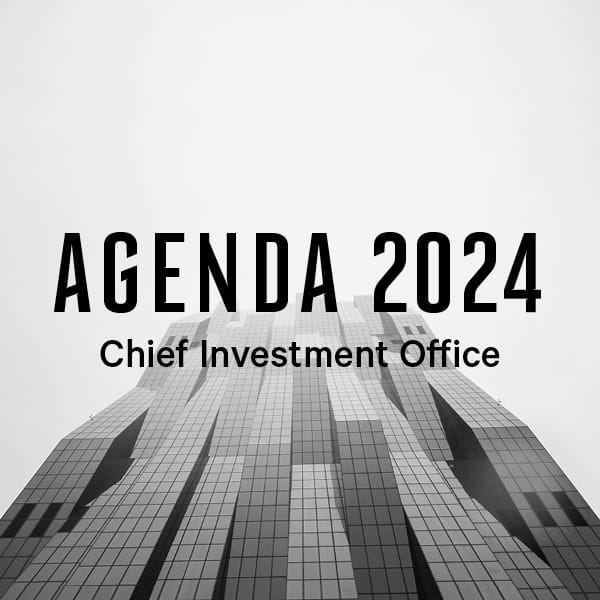-
Alternative Assets

The alternatives sector as a collective is diverse and includes such vehicles as hedge funds, private equity, venture capital, private debt and real assets. Over recent times, there have been some large performance dispersions across the different alternative strategies, which helps to highlight the heterogeneity of the asset class.
The alternative sector as a whole has not been immune to a range of unpredictable global and macro-economic events. Entering 2022, a combination of events has emerged including the Russian government’s invasion of Ukraine, higher inflation and interest rates, with supply chain and labour challenges also increasing volatility in 2022.
Real assets are the tangible, essential building blocks of society. Real assets include real estate, infrastructure, natural resources, land, precious metals, and commodities. They are called ‘real’ as they can often provide an inflation adjusted level of return to investors through an income component. Alternative investments, especially real assets, have exhibited in the past low or negative correlation to equity and fixed income markets at times of increased volatility.
Over the past year, we have increased the allocation to alternatives. This reflects our view that this asset class offers greater risk-adjusted return potential providing investors can accommodate the illiquidity risk that this comes with. This month we assess how a number of the alternative asset classes are placed in these rapidly changing conditions, and how they are well placed versus other asset classes to combat the current inflationary environment.
-
What’s driving inflation?

The start of 2022 brought strong economic tailwinds. Monetary and fiscal policy have been highly accommodative, while increasing vaccination rates are bringing back pre-pandemic activity levels. As COVID-19 restrictions have been lifted, production was unable to kick off as quickly as it had initially shut down. As it became increasingly apparent lockdowns would be more prolonged than initially hoped, consumer spending was reallocated across sectors, shifting towards goods and away from contact-intense services. This has seen bottlenecks in some places and spare capacity elsewhere. Strong consumer demand, particularly for goods, is accentuating supply chain disruptions. This has accelerated inflation that is now at the highest level since the early 1980s.
An economic landscape shaped by supply constraints will carry with it greater macro volatility. For example, where inflation is predominately demand-driven, stabilising inflation also stabilises growth. There is no trade-off. However, where supply constraints drive inflation, monetary policy cannot stabilise both inflation and growth – it must choose between them.
Despite experiencing the impact of supply chain disruptions, comparatively, Australia has been spared the worst. Supply chain bottlenecks have been milder in Australia and neighbouring Asia compared to the United States, who have borne the brunt of the supply chain issues. Despite this, Australia has recorded the largest annual increase in inflation since the introduction of the Goods and Services Tax (GST) in 2000. Consumer Price Index (or CPI) rose 5.1% annually as at March 2022.
Chart 1: Real Estate and Infrastructure correlated with inflation

Source: Bloomberg
The impact of inflation varies across asset classes and investment types. Real assets remain a potent hedge against inflationary pressures, particularly where income is inflation linked.
-
Direct Property

Commercial property can act as a hedge to inflation in a number of ways. For example, it is common for commercial real estate leases to have annual rent increases tied directly to increases in inflation (i.e. fixed rate plus CPI) – giving investors an income boost that offsets the effects of higher inflation. It is also common for annual rent increases to be set above the long-term inflationary outlook. This is why commercial property is regarded as an inflation hedge.
On the other hand, the sharp increase in building costs will likely constrain new supply in the near term, raw material prices have increased significantly whilst labour shortages and supply chain disruptions have also put upward pressure on costs. This will place a premium on existing high-quality assets in the property sector further supporting commercial real estate prices.
Complementing this inflation protection for the real estate sector is the structural tailwinds for many subsectors of commercial real estate including industrial, prime grade office and healthcare property which investors continue to have strong demand for given the defensive characteristics.
In direct property, we recently introduced the Charter Hall Wholesale Property Securities No.2 (WPS No.2) which provides diversified property exposure including commercial, office, social and industrial exposure. Charter Hall’s philosophy focuses on higher quality assets with lower levels of vacancy, often leased on long-term deals to government, listed and blue-chip tenants in prime CBD locations in the major cities across Australia. The aim is to provide investors with the defensive portfolio characteristics necessary at a time when parts of the market are coming under pressure and provides access to regular, reliable income through market ups and downs and act as a potential inflation hedge.
-
Infrastructure

The COVID-19 pandemic and recent climate events have underscored the importance of infrastructure, highlighted the inadequacy of certain pockets of existing infrastructure and significantly accelerated pre-existing trends, most notably a focus on renewables and energy transition, as well as the continued digitization of economies.
The first half of 2021 saw the global economy continue its recovery from the initial shock of COVID-19. The supportive environment for infrastructure was challenged in the latter half of the year as inflation showed itself to be more persistent than initially expected, and the market’s expectations of interest rate hikes increased. This picture has now been further complicated by the conflict in Ukraine which continues to impact supply chains and energy prices, muddying the situation for policy makers as the fear of inflation is quickly becoming the fear of stagflation.
Will infrastructure be a hedge against inflation?
History suggests infrastructure assets, on average, are less sensitive to inflation, and in many environments will perform ahead of other growth focused assets and display the resiliency and defensiveness that investors expect from assets that are generally uncorrelated to economic growth throughout the cycle.
Chart 2: The impact of inflation, GDP growth and interest rates

Source: Macquarie Group
The extent of the inflation protection can vary dramatically based on several factors. Infrastructure investors often seek businesses with long-term contracts to provide income stability and certainty. Assets and essential services that have either explicit inflation linked pricing or those that have true inelastic demand will likely benefit from the inflation protecting attributes of infrastructure. However, if an asset’s pricing does not reset with inflation or is unable to pass through any input cost inflation, the impact from a prolonged inflationary environment could significantly erode value.
If inflation is being driven by energy prices, wage growth, and/or raw material prices, the impact on infrastructure businesses could be more pronounced. There are mitigants to this, but it is more pronounced in some assets versus others. Those assets with larger labour forces and those that are undergoing heavy capital expenditure (requiring raw materials) are more at risk if they are not able to generate proportional increases in revenue. Conversely, a number of the new-economy infrastructure assets have more structural protection from input inflation given lower exposure to energy prices and raw materials and tend to have proportionally smaller labour forces.
What’s the impact of rising rates on infrastructure?
The impact of historic low interest rates has seen infrastructure valuations in certain parts of the market move towards elevated valuations. There is however reason to believe that the “floor” to infrastructure valuations is likely to remain elevated – the key reason being the significant increase in the level of capital participating in infrastructure markets.
As infrastructure managers have raised more capital, and as a number of institutional sovereign and public entities have invested directly in infrastructure, the competition and prices for these assets has increased. Due to the sizable nature of many infrastructure investments, funds in the space tend to be massive – the average fund size in 2021 was $1.4 billion. These pools of capital are relatively stable and are expected to continue to participate in infrastructure markets.
Chart 3: Real Asset AUM now above $1 trillion

Source: Pitchbook
Post the pandemic, many of the structural changes infrastructure fund managers were focused on have accelerated. Significant opportunities are opening up for investment into next generation infrastructure such as renewable energy and key areas of digitization like fibre networks, towers and data centres. Whilst many governments have made infrastructure a core component of their post-pandemic recovery plans, the level of fiscal spending on infrastructure projects won’t be enough to fill the gap for what is required, leaving a big opportunity for private sector investment in many of these strong growth sectors.
The Organisation for Economic Co-operation and Development (OECD) estimates that decarbonization efforts alone will require in excess of $6.9 trillion of investment annually by 2030 to meet interim targets while some estimates suggest telecommunication infrastructure upgrades will require in excess of $9 trillion by 2040.
Chart 4: Global Infrastructure Funding Gap

Source: Global Infrastructure Hub
Higher inflation and rising interest rates and the resulting impacts reminds us that not all infrastructure assets are created equally and also highlights the importance of manager selection. While rising inflation may aid those infrastructure businesses with inflation linked pricing, inelastic demand, and stable cost structures, while adversely affecting those that don’t hold such attributes. Rising interest rates may put pressure on the recent premium pricing that we have seen in the largest core assets but should have less of an impact on value-add assets, which have less interest rate sensitivity.
-
Private Debt

Outside of real asset classes, other strategies across private markets, in particular private debt, are well equipped to deal with the ongoing market volatility and changes to interest rates.
In periods of higher inflation, private debt can offer investors a level of protection – being a floating rate asset class means the underlying yield increases as inflation and interest rates increase. Additionally, the long term, patient capital nature of private debt, and the ability to absorb and pass on rising costs mean these strategies can actually benefit from inflation, with investors still well-compensated for taking illiquidity and complexity risk.
For example, we recently introduced the Partners Group Global Income. The fund is expected to be 95% invested floating rate debt securities, consequently duration risk is considered to be low. The fund is highly diverse across industry sector, country and position with exposures to in excess of 380 loans. Private debt is typically floating rate and therefore the pricing of private debt is not as sensitive as a typical bond investment.
Chart 5: Private Credit spreads remain attractive

Source: JPMorgan, Q3 2021
Stephen Dickinson
Investment AnalystDarragh Kennelly
Investment Analyst














